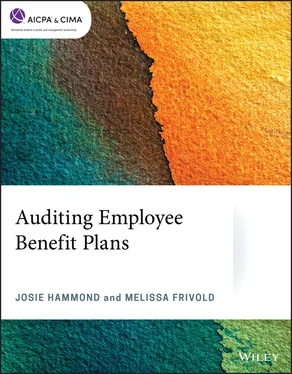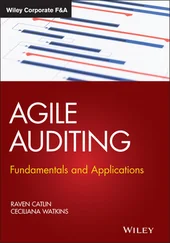( Note:Typically, plan tax years will remain open for three years; however, this may differ, depending upon the tax situations of each individual plan. Plan sponsors may wish to consult with their tax specialist to determine the applicable open tax years for their plan.)
1 Under FASB ASC 740, Income Taxes, a Plan should assess and disclose the uncertainty of income tax positions for how many years?Seven years.Not applicable – the Plan is tax exempt.All open tax years.Only those years for which there is less than a 50 percent likelihood that a tax position taken by the plan will not be sustained upon examination.
The effective date of a plan merger, on relevant plan merger agreements or documents, is often prior to the actual date of transfer of plan assets. Form 5500 instructions also indicate that “a final return or report should be filed for the plan year (12 months or less) that ends when all plan assets were legally transferred to the control of another plan.” As a result, confusion often exists in determining the last reporting date for the financial statements and Form 5500 when a plan merger occurs.
For defined benefit plans, a merger is typically recorded on the effective date based on merger agreements or documents, as legal title and liabilities are transferred on the merger date. Therefore, if there is a difference between effective date and transfer date, it may be appropriate to record a liability for net assets to be transferred to the acquiring plan at year-end. Depending on the timing of the transfer, the receiving plan may record an asset or receivable.
For defined contribution plans, if a significant difference in dates exists, it may be appropriate to perform an audit through the date of the actual transfer. However, all facts and circumstances should be considered in determining the proper date of merger. For instance, because a plan may hold assets in more than one trust, a surviving plan may report assets held in a predecessor plan’s trust account when they have legal control of those assets or trust before the assets are physically transferred to the trust of the surviving plan. The plan administrator may need to seek legal counsel for assistance in determining the last reporting date when assets were legally transferred to the control of a successor plan.
Once a decision to terminate a plan has been made, and liquidation is determined to be imminent, disclosure of the relevant circumstances is required in all subsequently issued financial statements. Once liquidation is imminent (for example, when the decision to terminate has been approved and is unlikely to be blocked by other parties or any regulatory entity), then the financial statements for the plan should be using liquidation basis of accounting under FASB ASC 205-30.
Note:A defined benefit pension plan may only terminate following certain rules and procedures, as set forth in Title 29 CFR part 4041 of ERISA. Therefore, these rules may affect assessment of whether the liquidation of a plan is imminent under this standard.
Changing to liquidation basis generally causes little or no change in asset values as most assets are already carried at fair values. Certain assets, such as insurance contracts carried at contract value, operating assets, or other assets that cannot be easily disposed of, should be adjusted to net realizable value. Adjustments should be made to reduce investments for penalties or charges as a result of termination.
Upon termination, participants become fully vested in all benefits. Therefore, accumulated plan benefits and benefit obligations should be determined on the liquidation basis by taking into consideration the fully vested rights. Beginning of year benefit information is no longer relevant once a plan is terminating, as it would have been based on assumptions for an ongoing plan. If the beginning of year benefit information is presented, and the plan terminated during the year presented in the financial statements (after the benefit information date), this would not eliminate the requirement to disclose the estimated effect of the amendment to terminate the plan, which was not reflected in the accumulated benefits presented.
Among the requirements for financial statements prepared on a liquidation basis is that the plan
present relevant information about an entity’s expected resources in liquidation by measuring and presenting assets at the amount of the expected cash proceeds from liquidation;
include in its presentation of assets any items not previously recognized under GAAP but that it expects to either sell in liquidation or use in settling liabilities;
recognize and measure an entity’s liabilities in accordance with GAAP that otherwise applies to those liabilities;
accrue and separately present the costs that it expects to incur and the income that it expects to earn during the expected duration of the liquidation, including any costs associated with sale or settlement of those assets and liabilities; and
disclose an entity’s plan for liquidation, the methods and significant assumptions used to measure assets and liabilities, the type and amount of costs and income accrued, and the expected duration of the liquidation process.
Help desk.The AICPA issued Technical Question and Answer (Q&A) sections 6931.18–.30 (AICPA, Technical Questions and Answers ) to provide nonauthoritative guidance related to the implementation of liquidation basis of accounting. Although the information in these Q&As is specific to single employer defined benefit and defined contribution plans, it may be useful when considering liquidation basis for other types of plans.
When the plan sponsor encounters financial adversities, plan management may also need to evaluate whether such adversities raise substantial doubt about the plan’s ability to continue as a going concern.
FASB ASC 205-40 requires management to assess an entity’s ability to continue as a going concern within one year after the date that the financial statements are issued (or available to be issued). If it is determined that there is substantial doubt about the plan’s ability to continue as a going concern, the mitigating effect of management’s plans should be considered only to the extent it is probable the plans will be effectively implemented and mitigate the conditions or events giving rise to substantial doubt. Certain disclosures are required when substantial doubt is alleviated as a result of consideration of management’s plans. An explicit statement in the notes to the financial statements is required that there is substantial doubt, as well as other disclosures when substantial doubt is not alleviated.
FASB ASC 855, Subsequent Events , established general standards of accounting for and disclosure of events that occur after the balance sheet date but before financial statements are issued or available to be issued. There are two types of subsequent events to be evaluated under this Statement: ( a ) recognized subsequent events and ( b ) nonrecognized subsequent events.
An entity must recognize in the financial statements the effects of all subsequent events that provide additional evidence about conditions that existed at the date of the balance sheet, including the estimates inherent in the process of preparing financial statements. An entity must not recognize subsequent events that provide evidence about conditions that did not exist at the date of the balance sheet but that arose after the balance sheet date but before financial statements are issued or are available to be issued. Some nonrecognized subsequent events may be of such a nature that they must be disclosed to keep the financial statements from being misleading. For such events, an entity must disclose the nature of the event and an estimate of its financial effect or a statement that such an estimate cannot be made.
Читать дальше











